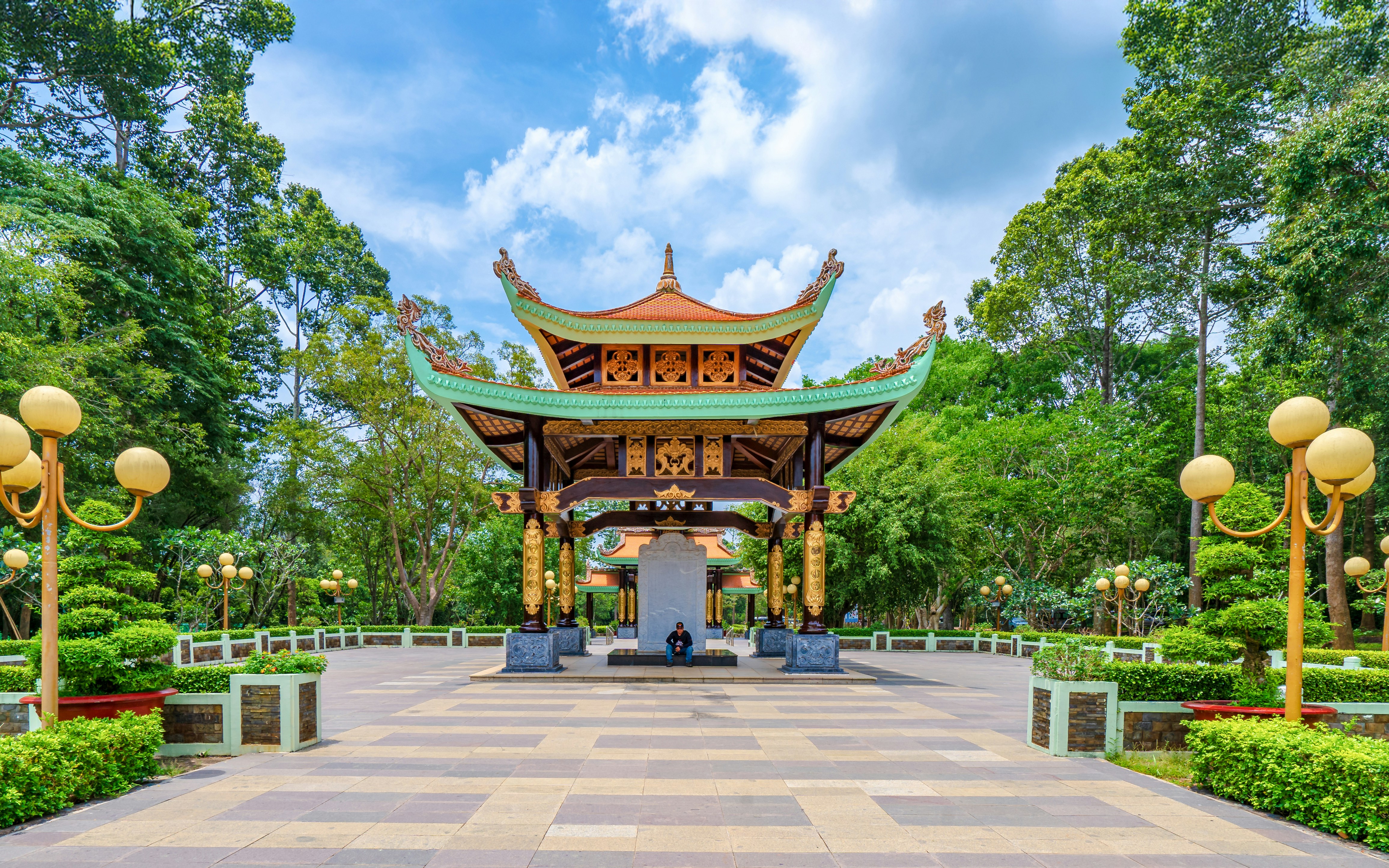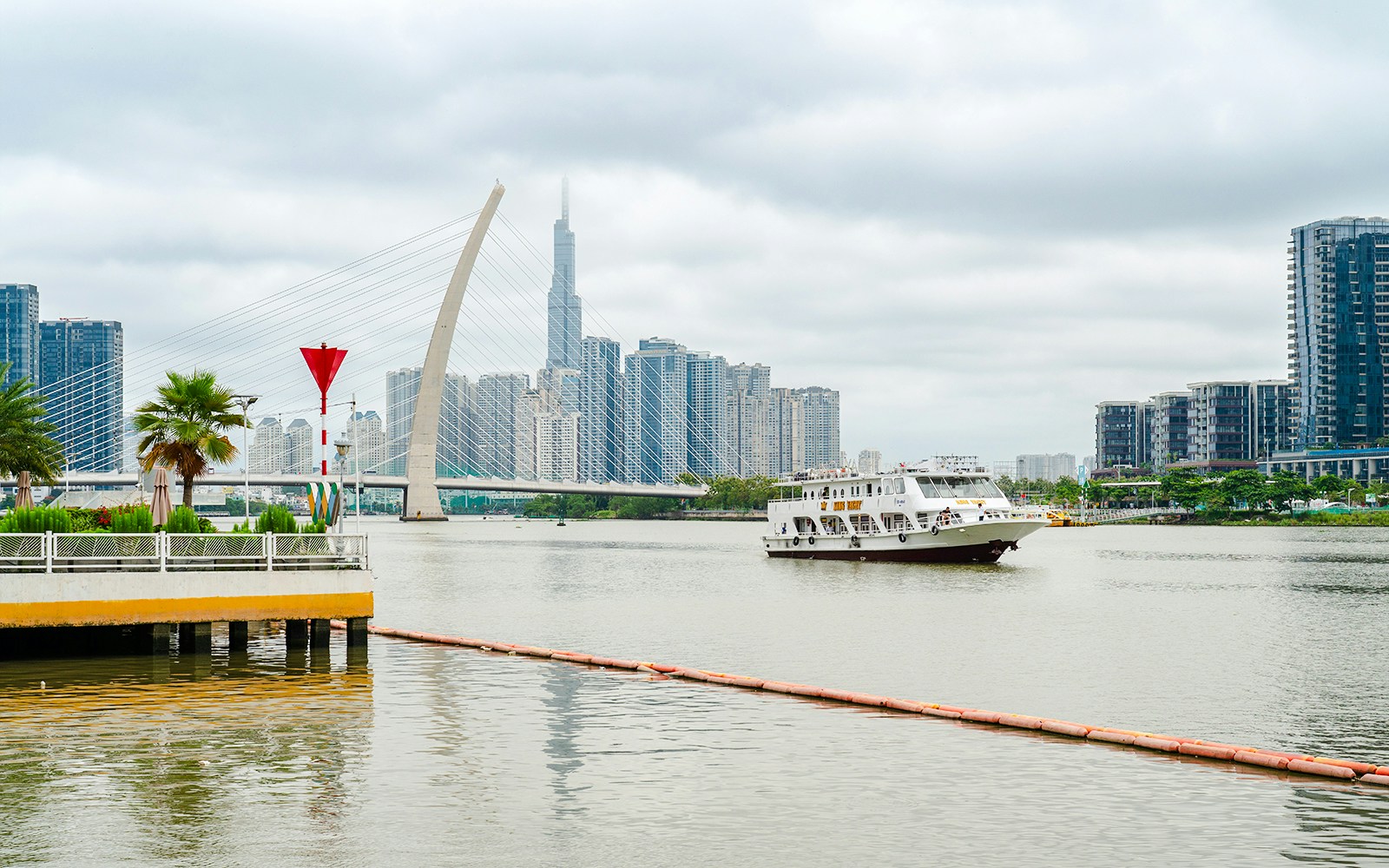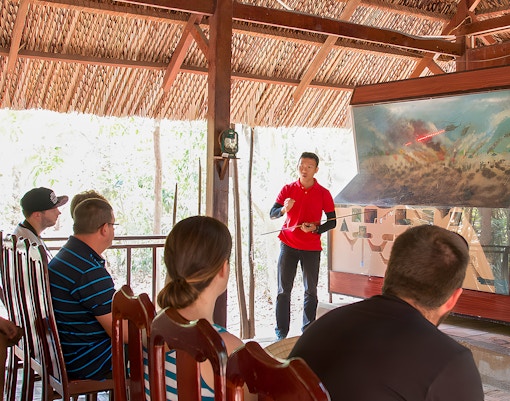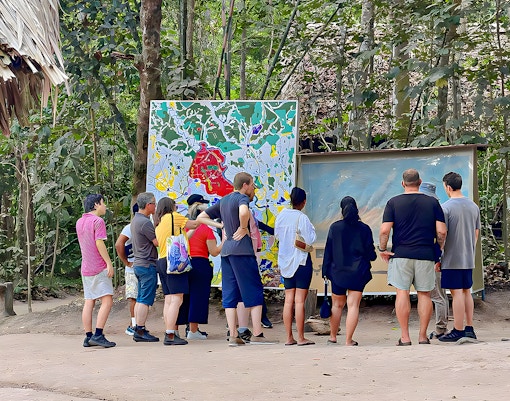- Location: About 50 km northwest of Ho Chi Minh City, near the Saigon River.
- Landmark: Adjacent to the Cu Chi Tunnels Memorial Park, with visible trapdoor and tunnel replicas.
- Accessibility: Tunnels have been widened for tourists; easier to navigate for first-time visitors.
- Highlight: Trapdoor demos, weapon displays, and a firing range for an interactive experience.
Cu Chi Tunnels’ entrances & access points explained
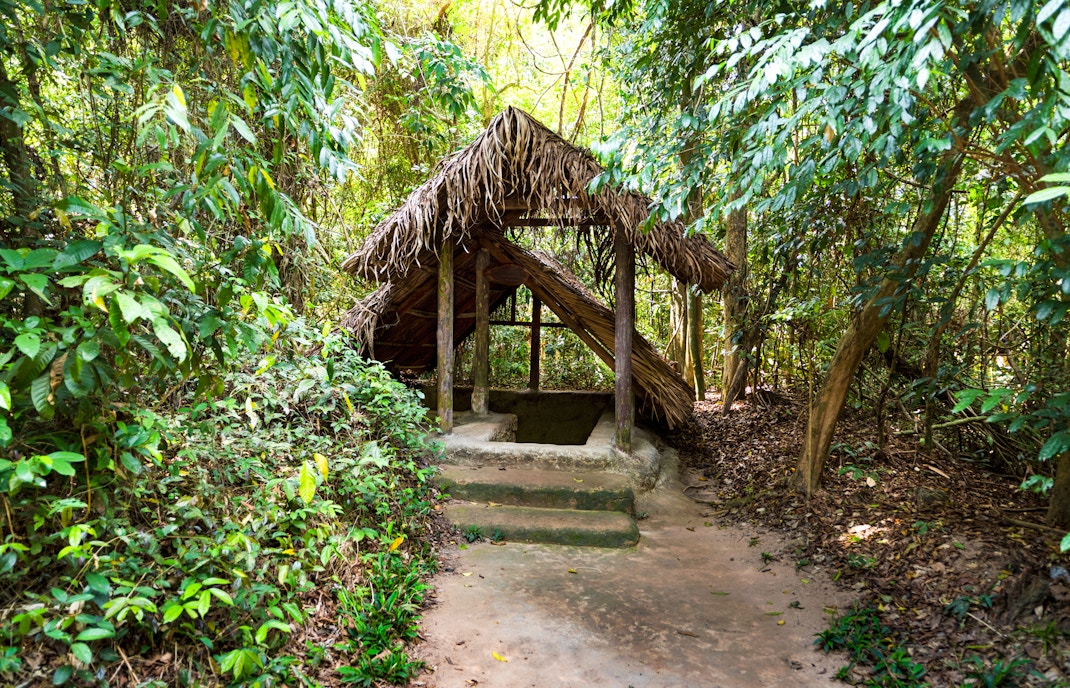
Ben Dinh Entrance
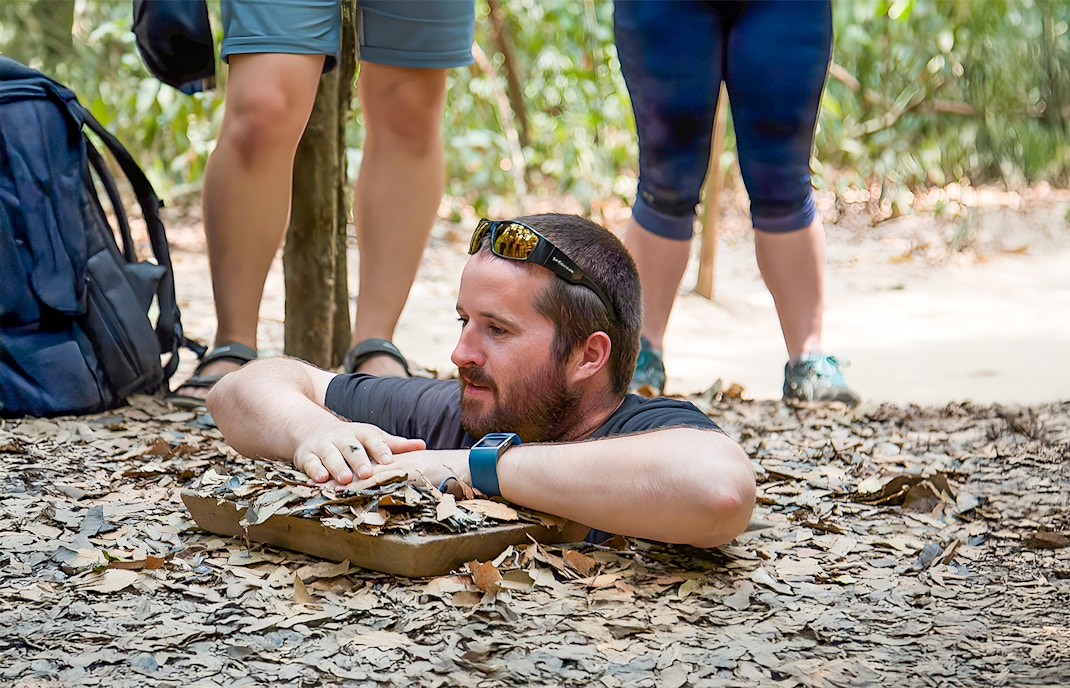
Ben Duoc Entrance
- Location: Approximately 70 km from Ho Chi Minh City, deeper in the Cu Chi District forest.
- Landmark: Near the Ben Duoc Temple, a peaceful memorial honoring fallen Vietnamese soldiers.
- Accessibility: Retains original tunnel dimensions; requires stooping or crawling through narrow passages.
- Highlight: More authentic and less crowded, ideal for those wanting a realistic look at wartime conditions.





